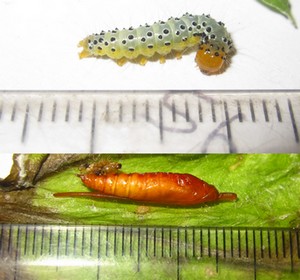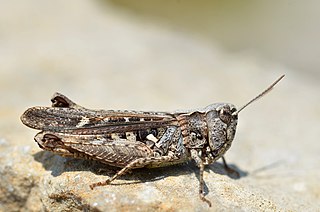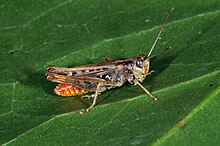
The Soyuz programme is a human spaceflight programme initiated by the Soviet Union in the early 1960s. The Soyuz spacecraft was originally part of a Moon landing project intended to put a Soviet cosmonaut on the Moon. It was the third Soviet human spaceflight programme after the Vostok (1961–1963) and Voskhod (1964–1965) programmes.
Kosmos is a designation given to many satellites operated by the Soviet Union and subsequently Russia. Kosmos 1, the first spacecraft to be given a Kosmos designation, was launched on 16 March 1962.
The Kosmos-3M was a Russian space launch vehicle, member of the Kosmos rocket family. It was a liquid-fueled two-stage launch vehicle, first launched in 1967 and with over 420 successful launches to its name. The Kosmos-3M used UDMH fuel and AK27I oxidizer to lift roughly 1,400 kg (3,100 lb) of payload into orbit. It differed from the earlier Kosmos-3 in its finer control of the second-stage burn, allowing operators to tune the thrust and even channel it through nozzles that helped orient the rocket for the launching of multiple satellites at one time. PO Polyot manufactured these launch vehicles in the Russian city of Omsk for decades. It was originally scheduled to be retired from service in 2011; however, in April 2010 the Commander of the Russian Space Forces confirmed that it would be retired by the end of 2010. One further launch, with Kanopus-ST, was planned; however, this was cancelled in late 2012 as the launch vehicle had exceeded its design life while in storage ahead of the launch.
The Kosmos rockets were a series of Soviet and subsequently Russian rockets, derived from the R-12 and R-14 missiles, the best known of which is the Kosmos-3M, which has made over 440 launches. The Kosmos family contained a number of rockets, both carrier rockets and sounding rockets, for orbital and sub-orbital spaceflight respectively. The first variant, the Kosmos-2I, first flew on 27 October 1961. Over 700 Kosmos rockets have been launched overall.
East Polden Grasslands is a 124 hectare biological Site of Special Scientific Interest on the Polden Hills in Somerset, notified in 1999.

Kosmos 186 and Kosmos 188 were two uncrewed Soviet Union spacecraft that incorporated a Soyuz programme descent module for landing scientific instruments and test objects.
Kosmos-2I is the designation applied to two Soviet carrier rockets, members of the R-12 Kosmos rocket family, which were used to orbit satellites between 1961 and 1977. They were superseded by the R-14 derived Kosmos-3 and Kosmos-3M.

The Kosmos-3 was a Soviet carrier rocket, derived from the R-14 missile, which was used to orbit satellites between 1966 and 1968. It was quickly replaced by the modernised Kosmos-3M. Six were flown, four as orbital carrier rockets, and two on sub-orbital flights. All launches occurred from Site 41/15 at the Baikonur Cosmodrome.

Calopteryx haemorrhoidalis is a species of damselfly in the family Calopterygidae known by the common names copper demoiselle and Mediterranean demoiselle.

Salbia haemorrhoidalis, the lantana leaftier, is a moth of the family Crambidae. It is native to South America, Central America, the Antilles and the southern United States, but has been introduced in Hawaii in 1956, Queensland in 1958 and Réunion, Mauritius to control Lantana. The species was first described by Achille Guenée in 1854.

Omocestus viridulus, known in the British Isles as the common green grasshopper, is a Palearctic species of grasshopper in the subfamily Gomphocerinae.
Copelatus haemorrhoidalis is a species of diving beetle. It is part of the genus Copelatus in the subfamily Copelatinae of the family Dytiscidae. It was described by Régimbart in 1883.

Omocestus is a genus of 'short-horned grasshoppers' belonging to the family Acrididae subfamily Gomphocerinae.
Kosmos 154, also known as L-1 No.3P, was a Soviet test spacecraft launched from the Baikonur aboard a Proton-K rocket. It was a prototype Soyuz 7K-L1 launched by Proton. It was an uncrewed precursor to the Zond series.

Heliothrips haemorrhoidalis is a species of thrips in the family Thripidae. It is most commonly known as the greenhouse thrips, the glasshouse thrip or black tea thrips. This species of thrips was first described in 1833 by Bouché in Berlin, Germany. H. haemorrhoidalis also has many synonyms depending on where they were described from such as: H. adonidum Haliday, H. semiaureus Girault, H. abdominalis Reuter, H. angustior Priesner, H. ceylonicus Schultz, Dinurothrips rufiventris Girault. In New Zealand, H. haemorrhoidalis is one of the four species belonging to the subfamily Panchaetothripinae.

Omocestus raymondi is a species of slant-faced grasshopper in the family Acrididae. It is found in southern Europe and northern Africa.

Omocestus panteli, or Pantel's grasshopper, is a species of slant-faced grasshopper in the family Acrididae. It is found on the Iberian Peninsula.










